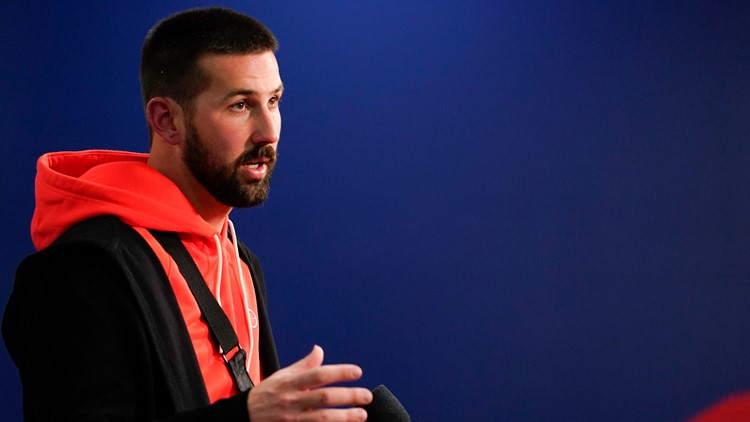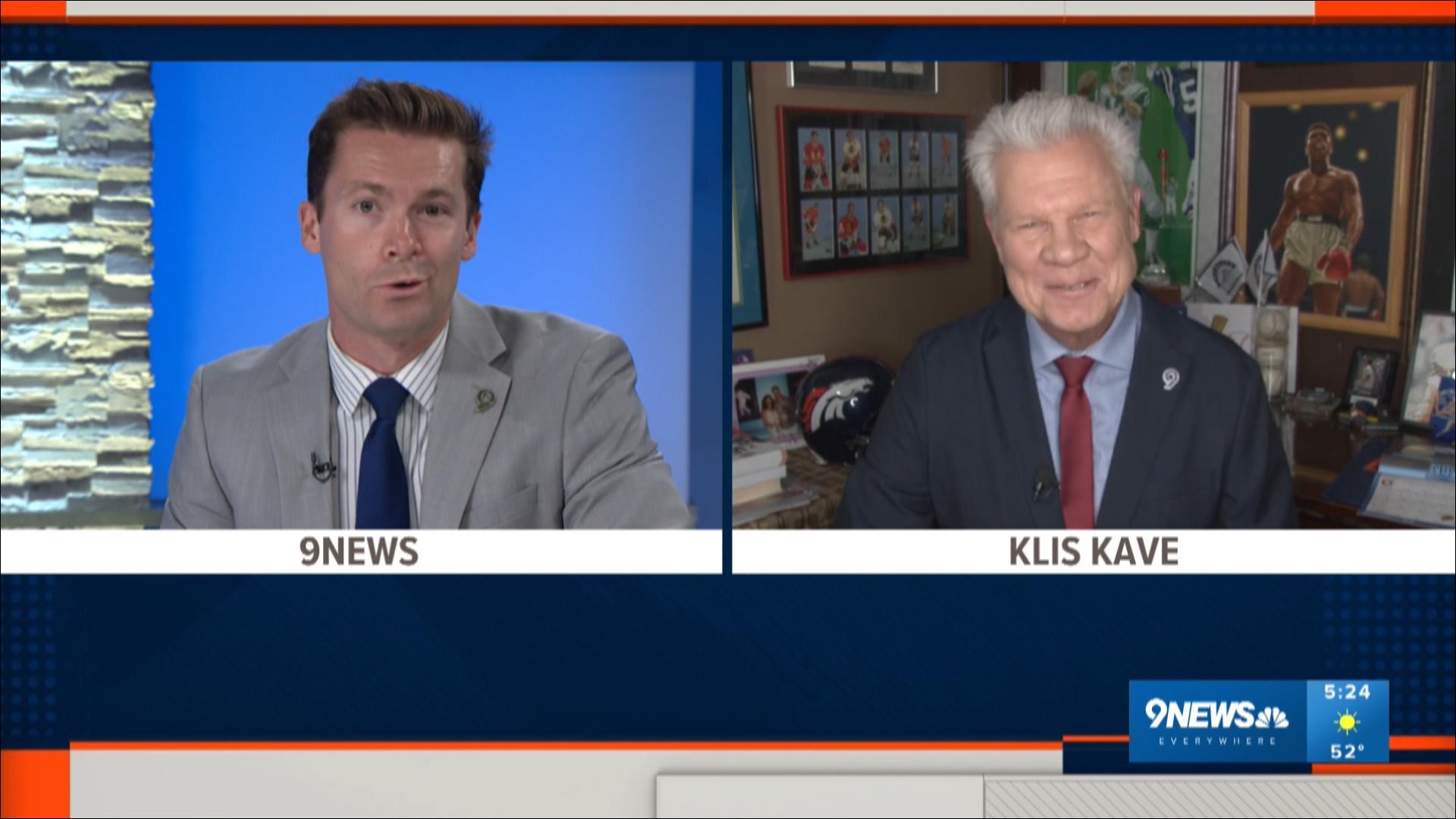DENVER — The coronavirus impact continues to grow.
By a slim margin of 1,109 to 959, NFL players voted to approve the new 17-game collective bargaining agreement, the NFL Players Association announced Sunday morning. The new 10-year, 11-season agreement runs through 2030.
While the new CBA brings more jobs through expanded rosters, more pay and improved benefits and work rules to the players, the players nearly balked for one reason.
“The extra game,’’ said Broncos player rep Brandon McManus, who is better known as the team’s placekicker “One hundred percent the extra game. Player safety had a lot to do with it. The slippery slope of continuing to add games.
“The NFL used to be 14 games, then it went to 16 and now we’re at 17. Trying to prevent that slippery slope from continuing.’’
The plan is for the 17-game schedule to go in effect starting with the 2021 season. And expanded 14-game playoff system – one additional team from each conference – begins this year.
With only 60 votes separating the “Yay’s” from the “Nay’s,” there’s little question the devastating blow to the economy caused by the national coronavirus outbreak last week put the player’s vote over the top.
Had the players rejected the proposal, the owners were promising to lock out the players in 2021 with a proposal that may have offered 20 percent fewer enticements.
“I’d definitely say, yes,’’ McManus said when asked about COVID-19’s impact on the vote. “Most of the votes were already in (before coronavirus started shutting the country last week) but I’d say at least 60 people voted on Saturday that could have swayed it.
“When we were down in Miami (on Tuesday) they said 1,200 had already voted. So 750 people voted between Tuesday and Saturday. I think there would have been a bigger difference had the coronavirus happened last week before the voting opened, there definitely would have been more ‘yes’ votes.”
McManus himself voted ‘no.’ A ‘close no’ is how he has described his feelings about the new CBA. But he voted before coronavirus grew into such a national crisis. Would he have changed his mind had waited till closer to the end of the vote cutoff Saturday night?
“I think it would have been beneficial, ‘yes,’’’ McManus said. “Obviously with the economic uncertainty, I think it would have been much better to stabilize that. We had been guaranteed the 48 percent, but who knows what the TV deals will look like now. They could be substantially less.”
Among the improvements players will realize from the new CBA:
Minimum Salary Increases
Rookies to 9-year veterans will get one-year salary raises from $104,000 to $120,000 per year. 10-year vets will get a relatively modest $20,000 raise. Explanation to follow.
Service: salary increase (%) from 2019 to 2020
- Rookies: 23.2% increase from $495,000 to $610,000
- 1 year: 18.4% increase from $570,000 to $675,000
- 2 years: 16.3% increase from $645,000 to $750,000
- 3 years: 14.6% increase from $720,000 to $825,000
- 4-6 years: 12.9% increase from $806,000 to $910,000
- 7-9 years: 12.9% increase from $930,000 to $1,050,000
- 10+ years 1.9% increase from $1,030,000 to $1,050,000
These minimum salaries will go up incrementally every year until even an undrafted rookie would make $1.02 million in 2029.
The NFL and players union acknowledged that 60 to 70 percent of the players make at, or near minimum salaries at their respective service thresholds.
As for the nominal increase for 10-year players, two things. One, the thinking is if they last that long, they’re living on their own mega-deals anyway. Aaron Rodgers is a long way from minimum with an average salary of $33.5 million.
And two, 10-year players who aren’t stars found they weren’t getting jobs because of their $1.03 million minimum salaries. Teams were preferring 5-year pluggers at $200,000 less to fill their second units and play special teams.
This proposal lumps 10-year players with 7-9 year players which in turn gives 10-year players a better shot at extending their careers.
Cashflow
Instead of getting paid over the 17-week season, players will now have their paychecks spread out over 34 weeks, or from September through mid-May.
Player share of revenue
Players share of the revenues goes from 47 percent to 48 percent and 48.5 percent starting in 2021.
Playoffs
In exchange for two more playoff games, the players are expected to get an additional $70 million to $75 million.
Team spending requirements
The 32 teams spent a combined $6.12 billion in cold-hard cash to players spending in 2019, up 4.8 percent from 2018. It’s the first time combined league salaries topped $6 billion.
That’s with teams required to spend 89 percent of the league’s annual salary-cap. Under the new proposal, teams will have 90 percent minimum.
With the salary cap coming in at $198.2 million this year, that means teams would have to spend at minimum $178.4 million in cash dollars on player salaries.
Roster increases
This means more jobs. Game-day rosters expand from 46 to 47 players and it can be 48 players if a team chooses to carry 8 offensive linemen. (Most teams, including the Broncos, had usually dressed seven blockers)
Also, starting this year, a team’s active roster can increase from 53 to 55 players for a limited number of games. This will happen when two promoted practice squad players don’t have to clear waivers when they get sent back down to the practice squad.
Speaking of practice squads, its rosters will increase from 10 to 12 players in 2020, then to 14 players in 2022.
Practice squad weekly salaries will bump from $8,000 in 2019 ($136,00 per year) to $8,400 in 2020 ($142,800 per year) and up to $11,500 in 2022 ($195,500 per year).
Also three players can now return from injured reserve, up from two.
Retirement benefit improvements
*There will be an immediate 10 percent increase in all pension amounts.
*In addition, a player’s annuity for a vested vet (4+years) goes from $95,000 per year to $110,000 per year.
The league’s annual annuity contributions will increase every three years.
Medical plan enhancements
Vested vets (again, 4+seasons) will get 5 five full years of fully-paid health insurance for themselves and family after they retire.
The league’s annual Health Reimbursement Account (HSA) contributions will increase from $30,000 per player in 2019 to $35,000 in 2020 and it would reach $50,000 annually by 2027.
Work rule changes
Basically, vested veterans (4 seasons or more) can play hooky from offseason workouts more often.
Vested vets can miss up to 5 days of offseason workouts, including one OTA and still earn their full workout bonus.
Thursday night games
It will be required that players get three full days off after a Thursday night game. (Broncos head coach Vic Fangio had been doing this, anyway).
Training camp
There will be 6 mandatory days off for the upcoming, 16-game season; 8 days off starting with the 17-game season.
Reduction to 16 padded practices total and no more than three consecutive days in pads. (Note: There is far more heavy contact in padded practices than non-padded practices).
This means in-game execution could be worse. But players’ bodies, in theory, should be less banged up.
International games
There would be a league-wide maximum of 10 international games per year.
Any player that plays more than one international game in a season will receive an additional $5,000 stipend for each additional game.
Fines/discipline
On-field fines will be reduced by up to 40 percent. And then fines will increase by 3 percent per year instead of the current 5 percent increase.
Neutral arbitrator
This should be considered a win for the players. From now on, all commissioner discipline cases will be heard and judged by a neutral arbitrator that is jointly selected by the players union and the league. This includes personal conduct violations.
Drug policy changes
For players who have tested positive once for a banned recreational or performance-enhancing drug, they stay “in” the program for 24 months on first offense and indefinitely on second offense. Drug testing is merciless for players “in” the program.
In what is a notable concession, first-time offenders will only be in the program for 60 days while Stage Two offenders will now get reviewed every 30 days.
--A positive test for marijuana goes from 35 nanogram/liter to 150 nanogram/liter. (At the very least, this eliminates fear of a positive test from second-hand smoke.).
--The drug testing period for players not “in” the program will be limited from 2 weeks to year with the window between the first day of training camp until the first preseason game.
--One area of the NFL’s drug policy that would face stricter penalties is with DUI-type violations. Broncos safety Kareem Jackson was suspended two games without pay for such an infraction last year. Such violations will bring a 3-game suspension (without pay) moving forward.
SUGGESTED VIDEOS: Sports



